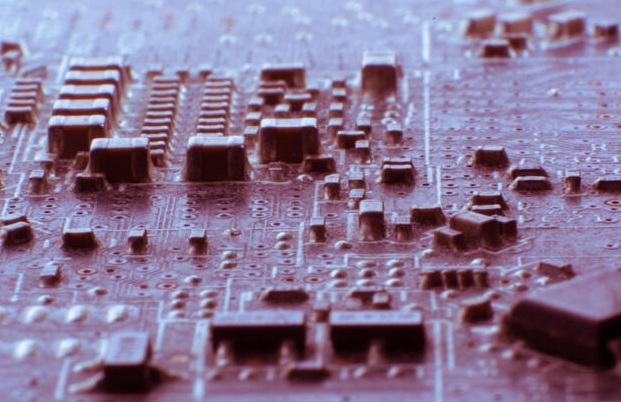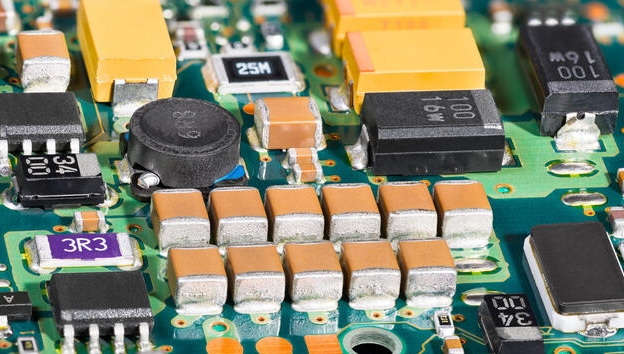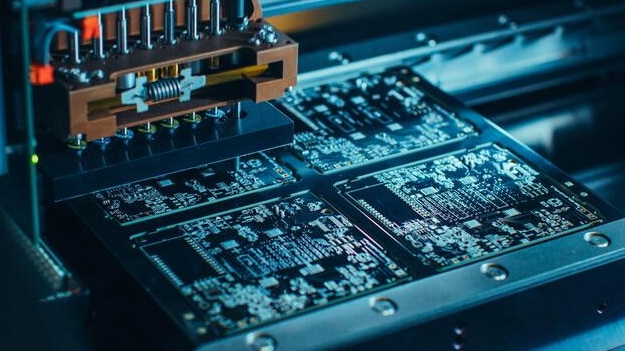Content Menu
● Understanding Wholesale SMT Full Line Solutions
● Time-Saving Advantages of Wholesale SMT Full Line Solutions
>> Enhanced Production Speed
>> Reduced Setup and Changeover Times
>> Automated Material Handling
>> Real-Time Process Monitoring
● Cost-Saving Benefits of Wholesale SMT Full Line Solutions
>> Reduced Labor Costs
>> Improved Quality Control
>> Minimized Material Waste
>> Enhanced Energy Efficiency
● Scalability and Flexibility
>> Adapting to Changing Demand
>> Accommodating Product Diversity
● Long-Term Cost Benefits
>> Reduced Maintenance Costs
>> Improved Product Quality and Customer Satisfaction
● Implementation Considerations
● Case Studies
>> Case Study 1: Electronix Solutions Inc.
>> Case Study 2: Automatech Technologies Ltd.
● Conclusion
● FAQ
>> 1. What is the typical return on investment (ROI) for a wholesale SMT full line solution?
>> 2. How does a wholesale SMT full line solution impact product quality?
>> 3. What kind of training is required for staff to operate a wholesale SMT full line solution?
>> 4. How can a wholesale SMT full line solution adapt to changes in production requirements?
>> 5. What are the environmental benefits of implementing a wholesale SMT full line solution?
● Citations:
In the rapidly evolving electronics manufacturing landscape, achieving efficiency and cost-effectiveness is paramount for businesses to remain competitive. One of the most significant advancements in this field is the adoption of Surface Mount Technology (SMT) and, more specifically, the implementation of wholesale SMT full line solutions. These comprehensive systems offer a myriad of benefits that can significantly save both time and money for manufacturers. Let's delve into the intricacies of how these solutions can revolutionize your production process and boost your bottom line.

Understanding Wholesale SMT Full Line Solutions
Before we explore the time and cost-saving benefits, it's crucial to understand what a wholesale SMT full line solution entails. A wholesale SMT full line solution is a complete, integrated system that encompasses all the necessary equipment and processes for SMT production. This typically includes:
1. Solder Paste Printers: These machines apply solder paste to the PCB with high precision[1].
2. Pick and Place Machines: Advanced robots that accurately place components onto the PCB[1].
3. Reflow Ovens: These ovens melt the solder paste to create permanent connections between components and PCBs[1].
4. Inspection Systems: Automated optical inspection (AOI) systems that detect defects and ensure quality[1].
5. Conveyors and Automation: Systems that transport PCBs between different stages of assembly[1].
By integrating these components into a single, cohesive system, manufacturers can streamline their production process and reap numerous benefits.
Time-Saving Advantages of Wholesale SMT Full Line Solutions
Enhanced Production Speed
One of the most immediate benefits of implementing a wholesale SMT full line solution is the significant increase in production speed. These systems are designed to operate at high speeds while maintaining precision. For instance, modern pick and place machines can place tens of thousands of components per hour, dramatically reducing the time required for PCB assembly[4].
Reduced Setup and Changeover Times
Wholesale SMT full line solutions often feature quick-change tooling and software-driven setup processes. This means that changing from one product to another can be accomplished in a fraction of the time required by traditional manufacturing methods. The reduction in setup and changeover times allows for greater flexibility in production scheduling and faster response to customer demands[5].
Automated Material Handling
Many wholesale SMT full line solutions incorporate automated material handling systems. These systems can automatically feed components to the machines, reducing the time spent on manual material handling. This not only speeds up the production process but also minimizes the risk of human error and component mishandling[5].
Real-Time Process Monitoring
Advanced SMT full line solutions often include real-time monitoring capabilities. This allows operators to quickly identify and address any issues that arise during production, minimizing downtime and ensuring that problems are resolved swiftly[7].
Cost-Saving Benefits of Wholesale SMT Full Line Solutions
Reduced Labor Costs
One of the most significant cost-saving aspects of wholesale SMT full line solutions is the reduction in labor costs. By automating many of the processes involved in PCB assembly, these systems can dramatically reduce the number of operators required. This not only lowers direct labor costs but also reduces associated expenses such as training and employee benefits[6].
Improved Quality Control
Wholesale SMT full line solutions typically incorporate advanced inspection systems, such as AOI machines. These systems can detect defects with a level of precision and consistency that surpasses human capabilities. By identifying and addressing quality issues early in the production process, manufacturers can significantly reduce the costs associated with rework and product returns[1][4].
Minimized Material Waste
The precision offered by SMT full line solutions leads to more efficient use of materials. Solder paste printers can apply paste with extreme accuracy, reducing waste. Similarly, pick and place machines can place components with high precision, minimizing the risk of misplacement and subsequent waste. This efficient use of materials can lead to substantial cost savings over time[6].
Enhanced Energy Efficiency
Modern SMT full line solutions are often designed with energy efficiency in mind. For example, reflow ovens may incorporate advanced heating technologies and insulation to reduce energy consumption. Over time, these energy-saving features can lead to significant reductions in utility costs[4].

Scalability and Flexibility
Adapting to Changing Demand
Wholesale SMT full line solutions offer a high degree of scalability, allowing manufacturers to adjust their production capacity in response to changing market demands. This flexibility can help businesses avoid the costs associated with over- or under-production[1].
Accommodating Product Diversity
Many SMT full line solutions are designed to handle a wide range of PCB sizes and component types. This versatility allows manufacturers to produce diverse product lines without the need for multiple specialized production lines, leading to better resource utilization and cost savings[1].
Long-Term Cost Benefits
Reduced Maintenance Costs
While the initial investment in a wholesale SMT full line solution may be substantial, these systems often have lower long-term maintenance costs compared to a collection of individual machines. Integrated systems are designed to work together seamlessly, which can reduce wear and tear and simplify maintenance procedures[6].
Improved Product Quality and Customer Satisfaction
The precision and consistency offered by SMT full line solutions lead to higher quality products. This improvement in quality can result in increased customer satisfaction, potentially leading to repeat business and positive word-of-mouth referrals. In the long run, this can contribute to increased sales and market share[4].
Implementation Considerations
While the benefits of wholesale SMT full line solutions are clear, successful implementation requires careful planning and consideration. Here are some key factors to consider:
1. Initial Investment: The upfront cost of a full line solution can be significant. However, it's important to consider the long-term return on investment rather than focusing solely on the initial expense.
2. Training Requirements: Staff will need to be trained to operate and maintain the new equipment effectively. This training should be factored into the implementation timeline and budget.
3. Production Volume: The scale of your production should match the capabilities of the SMT full line solution. Over-investing in capacity that won't be utilized can negate potential cost savings.
4. Future Growth: Consider not just your current production needs but also your anticipated future requirements when selecting a system.
5. Support and Service: Ensure that the supplier of your SMT full line solution offers robust support and service to minimize potential downtime.
Case Studies
To illustrate the real-world impact of wholesale SMT full line solutions, let's look at two case studies:
Case Study 1: Electronix Solutions Inc.
Electronix Solutions Inc., a mid-sized electronics manufacturer, implemented a wholesale SMT full line solution to address challenges with manual assembly processes. The results were significant:
- Production throughput increased by 150%
- Labor costs reduced by 40%
- Defect rate decreased from 2% to 0.2%
- Overall production costs reduced by 25%
These improvements allowed Electronix Solutions Inc. to take on larger orders and expand their customer base, leading to a 35% increase in annual revenue within two years of implementation[1].
Case Study 2: Automatech Technologies Ltd.
Automatech Technologies Ltd., a startup specializing in IoT devices, invested in a customized wholesale SMT full line solution to scale up their production. The outcomes were impressive:
- Production capacity increased by 300%
- Time-to-market for new products reduced by 40%
- Material waste reduced by 60%
- Energy consumption per unit produced decreased by 30%
These improvements enabled Automatech Technologies Ltd. to rapidly scale their business, securing several large contracts that were previously out of reach due to production limitations[1].
Conclusion
Wholesale SMT full line solutions offer a powerful means of saving both time and money in electronics manufacturing. By enhancing production speed, improving quality control, reducing labor costs, and offering scalability, these integrated systems can provide a significant competitive advantage. While the initial investment may be substantial, the long-term benefits in terms of increased efficiency, reduced waste, and improved product quality can lead to substantial cost savings and increased profitability.
As the electronics industry continues to evolve, with increasing demands for smaller, more complex devices produced at higher volumes, the advantages offered by wholesale SMT full line solutions will become increasingly crucial. Manufacturers who embrace these advanced production systems will be well-positioned to meet the challenges of the future, delivering high-quality products efficiently and cost-effectively.
However, it's important to remember that implementing such a solution requires careful planning and consideration. Factors such as production volume, future growth projections, and staff training needs must be carefully evaluated to ensure a successful implementation. With the right approach, a wholesale SMT full line solution can transform your manufacturing process, saving you time and money while positioning your business for future success.

FAQ
1. What is the typical return on investment (ROI) for a wholesale SMT full line solution?
The ROI for a wholesale SMT full line solution can vary depending on factors such as production volume, product complexity, and current manufacturing processes. However, many manufacturers report seeing a positive ROI within 12-24 months of implementation. This is typically due to increased production efficiency, reduced labor costs, and improved product quality leading to fewer returns and reworks.
2. How does a wholesale SMT full line solution impact product quality?
A wholesale SMT full line solution can significantly improve product quality through several mechanisms. Firstly, the precision of automated placement reduces the likelihood of component misalignment. Secondly, integrated inspection systems can detect defects that might be missed by human inspectors. Lastly, the consistency of automated processes leads to more uniform production quality. Many manufacturers report defect rate reductions of 50% or more after implementing a full line solution.
3. What kind of training is required for staff to operate a wholesale SMT full line solution?
The training required depends on the complexity of the system and the prior experience of the staff. Typically, operators will need training on system operation, basic troubleshooting, and maintenance procedures. This training is often provided by the system supplier and can range from a few days to several weeks. Additionally, more in-depth training may be required for technicians responsible for advanced maintenance and programming.
4. How can a wholesale SMT full line solution adapt to changes in production requirements?
Modern SMT full line solutions are designed with flexibility in mind. They can often handle a wide range of PCB sizes and component types. Software-driven setup processes allow for quick changeovers between different products. Some systems also offer modular designs, allowing for the addition or reconfiguration of components as production needs evolve. This adaptability ensures that the system can continue to meet your needs as your product line changes and grows.
5. What are the environmental benefits of implementing a wholesale SMT full line solution?
Wholesale SMT full line solutions can offer several environmental benefits. They typically use materials more efficiently, reducing waste. Energy consumption per unit produced is often lower due to more efficient processes and equipment. The improved quality control also means fewer defective products, reducing the environmental impact of waste and rework. Additionally, some modern systems incorporate features specifically designed to reduce environmental impact, such as lead-free soldering capabilities and energy-saving modes.
Citations:
[1] https://de.hct-smt.com/blog/optimizing-electronics-manufacturing-with-a-wholesale-pcb-smt-production-machine-line
[2] https://www.adoptsmt.com/en/efficiency-enhancement-in-smt-manufacturing/
[3] https://www.gssmt-parts.com
[4] https://de.hct-smt.com/blog/wholesale-led-smt-production-line--revolutionizing-the-led-manufacturing-industry
[5] https://www.zjyingxing.com/info/what-are-the-ways-to-improve-the-efficiency-of-88896111.html
[6] https://www.gssmt-parts.com/how-can-a-wholesale-smt-full-line-solution-save-you-time-and-money.html
[7] https://vohrum.com/unlocking-the-full-potential-of-surface-mount-technology-tips-and-techniques-for-efficient-implementation/
[8] https://www.gssmt-parts.com/why-should-you-choose-a-wholesale-fully-automatic-smt-production-line-for-your-business.html
[9] https://www.smtneoden.com/news/how-to-effectively-improve-the-production-efficiency-of-pcb-smt-machine/




















